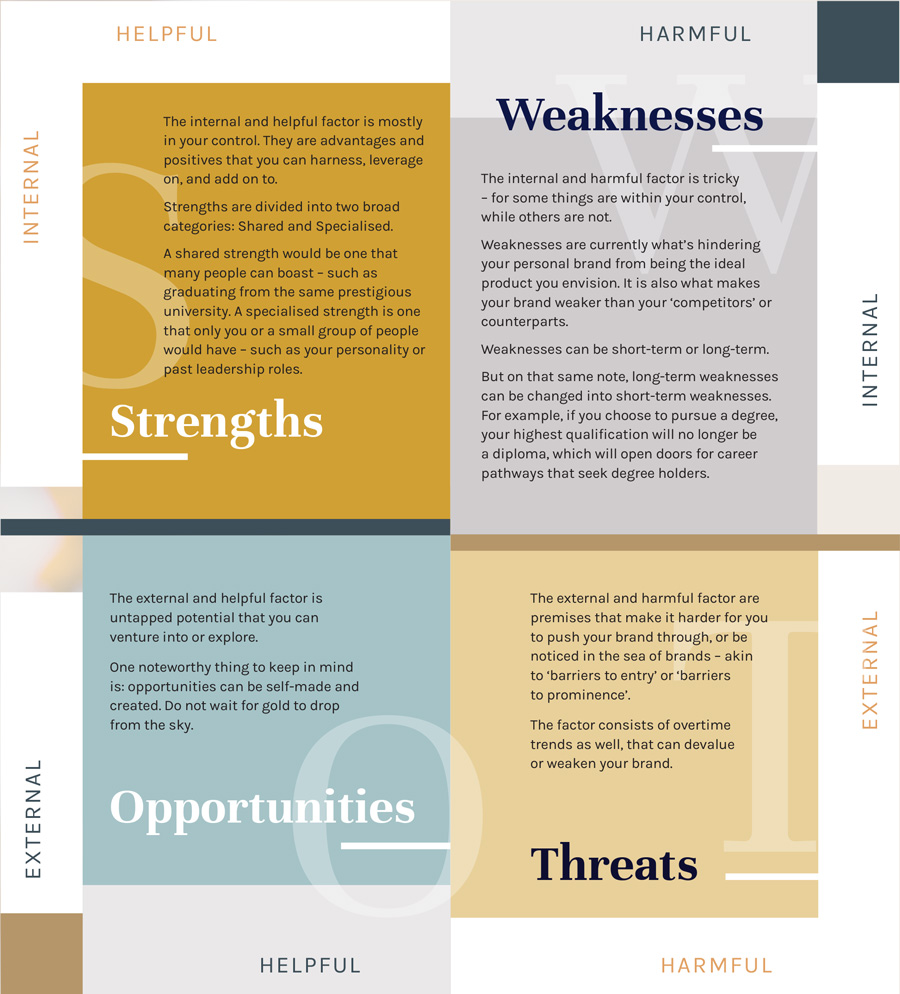So you have built a personal brand (You, My Friend, Are a Brand: 5 Steps to Building a Strong
Personal Brand on previous page) that you are confident
of. What now? Well, it is time to break it down,
paradoxically, to analyse just how strong and solid
it is. That is where the SWOT analysis framework
comes into play.
Most people know what the SWOT analysis is.
Developed in the 1960s and 1970s by a research
team at Stanford Research Institute and funded
by Fortune 500 companies, its purpose was to find
out the rationale behind the failures of corporate
planning of organisations.
Applied in almost all business contexts, the SWOT
analysis assists stakeholders to evaluate factors
that could impact the success of a new project or
direction, as a strategic planning device.
As with the famous matrix associated with the
SWOT analysis, it consists of four quadrants:
Strengths; Weaknesses; Opportunities; Threats.
Each of the four traits corresponds to a single
factor: Internal helpful; Internal harmful; External
helpful; External harmful.
Having said that, what is hardly touched on is
weaknesses and threats may not necessarily be
harmful; they are just shortcomings or not ideal.
Own it, change it, or re-position it.
So what are the these individual traits?
Moving on,
here are a few suggestions and questions to have an idea of
how to perform a SWOT analysis on your personal brand:
While there are many things to consider, do not be daunted
by the matrix because it is meant to be highly effective,
insightful, and helpful. This procedure can and should be
done at multiple stages and regular intervals to measure and
benchmark your brand against internal and external changes
as it rolls with the times, so you stay consistently relevant.



